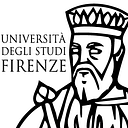Getting the Message of Abraham Ortelius’ Heart-Shaped Map and Atlas
From Firenze University Press Journal: Journal of Early Modern Studies (JEMS)
Stephanie Inverso, Boston University
The Flemish cartographer Abraham Ortelius (1527–1598) published the first edition of his celebrated Theatrum Orbis Terrarum in 1570. The Theatrum is considered the first atlas, de!ned as a bound collection of maps guided and shaped by its editor. While Gerard Mercator’s Atlas, which gave the name to the genre, would follow in 1595, Ortelius’ Theatrum is the first work that fits this description. The work enjoyed enormous commercial success; it went through forty editions between 1570 and 1641, in Latin, Dutch, French, German, and English (Koeman et al. 2007, 1318–1321). An atlas would have been a luxury purchase, and indeed, the !eatrum cost the equivalent of a month of a printer’s salary in 1570 (1331). Wealthy individuals could commission copies of the !eatrum, colored in by hand and specially bound (Van den Broecke et al. 1998, 81–82). Among those who could afford it, Ortelius’ atlas was an instant success and assured the cartographer’s financial security. The work of Ptolemy, the second-century Egyptian geographer, had always been preserved in the Arab world, even if it had been essentially lost in medieval Europe. The Italian scholar and humanist Jacopo Angelo encountered Ptolemy’s Geographia and translated it into Latin in 1406. This work laid the foundation for how we understand the creation and function of maps today, introducing the use of latitude and longitude to pinpoint locations and an index of place names to look up their locations quickly. Cartographic history since the nineteenth century has largely followed a positivist tendency: there were the Middle Ages, when monks created world maps with a mixture of guesswork and artistic license, and the Early Modern period, when the rediscovery of Ptolemy’s ancient treatise on geography enlightened European mapmakers to techniques of mathematical cartography. Scholars have viewed cordiform, or heart-shaped, maps from the sixteenth century as exceptions that prove the rule, alternatively novelty items and grasping, failed attempts to depict the globe on a fat surface. As scholars such as Patrick Gautier Dalché (2013) have shown, however, one cannot draw a neat line between medieval and ‘modern’, reality and fantasy, spiritual and scienti!c. Using Ortelius’ atlas as his primary case study, Denis Cosgrove argues against the notion that Renaissance geography was necessarily bound by the state political project, suggesting instead that it also served a moral and philosophical purpose (2003). Cultural critic Giorgio Mangani opened the door to scholarship on the spiritual themes of cordiform maps in particular with his 1998a article, ‘Abraham Ortelius and the Hermetic Meaning of the Cordiform Projection’. Some Ortelius scholars posit that ‘Ortelius’s atlas was primarily a commercial product’ (Koeman et al. 2007, 1324). Ortelius’ concern for profit, however, did not preclude him from imbuing his cartographic work with spiritual significance. Spirituality and commerce were not as opposed in Ortelius’ world as this quotation suggests. Hailed as a watershed moment in the development of cartography, Ortelius’ atlas was in fact not so distant from his first publication, a 1564 map of the world in the shape of a heart. This map manifests a spiritual call toward world unity heavily influenced by the heterodox sect known as the Family of Love. In his later work, the unorthodox message of his cordiform map was not erased but transmuted into the form of an atlas. Ortelius worked in Antwerp during the early days of the Dutch Revolt, which began in the late 1560s and ended with the Netherlands achieving independence from Spain in 1648. Given the historical context, one might expect confessional divisions to have proved a barrier to communication between cosmographers and other intellectuals. Within Ortelius’ network, this seems not to have been the case. Ortelius was a member of a religiously diverse network of European humanists. He was friends with Andrew Schotte, a Jesuit priest; Jakob Monau, a leader in the Calvinist church; and Justice Lipsius, who abandoned Catholicism for Calvinism before returning to the Catholic Church. Many of his friends had studied with the Protestant theologian Philip Melanchthon, whose ‘philosophy of pieta eloquens, a synthesis of ecumenism, private piety, erudition, and observation, resonated in the irenic circle of Ortelius’ (Meganck 2017, 22). The idea that Ortelius’ atlas was primarily a commercial product requires a narrow focus on the atlas itself. As a good humanist, Ortelius saw textual production as a collaborative effort, as evidenced by the detailed list of his sources that Ortelius included in the introduction to the !eatrum. We must situate Ortelius’ work in its context in conversation with other texts and ideas in order to comprehend its message. Along with cartographic knowledge, Ortelius invested his work with spiritual meaning that like-minded individuals readily ascertained.
DOI: https://doi.org/10.36253/jems-2279-7149-14390
Read Full Text: https://oajournals.fupress.net/index.php/bsfm-jems/article/view/14390
